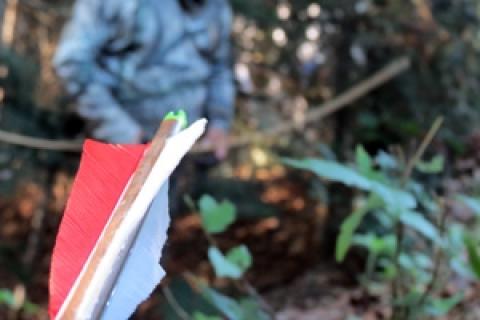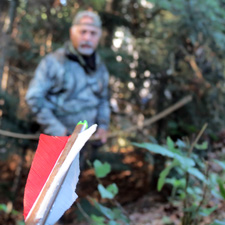
 Whenever I meet another traditional bow hunter, one of the first things I notice is his or her fletchings. It seems to me that they give a little hint about the hunter. Style, color and size of fletch can mean a lot.
Whenever I meet another traditional bow hunter, one of the first things I notice is his or her fletchings. It seems to me that they give a little hint about the hunter. Style, color and size of fletch can mean a lot.
Someone with spliced feathers, for instance, is a person who enjoys the aesthetics of the sport. A hunter with three identical fletch colors is probably pragmatic and the archer with four fletches doesn't mind thinking outside of the box. A person who has cut his own feathers is big on the traditional aspect of the sport. A hunter with a few flu-flu arrows in the mix is up for anything.
I'm generalizing, but you get the picture.
Fletchings, in whatever configuration, need to do a few things. Most importantly, they need to stabilize an arrow in flight — and for traditional bowhunters the sooner the better, since our shots at game are generally closer than those taken by bowhunters with more modern gear. Because of this and the fact that we use our fingers to release arrows, larger 5-inch feathers are typically the rule. You can go bigger, if the set up warrants it. But much smaller fletchings generally causes issues.
Feathers also need to be quiet. Some styles of fletchings just seem to be a little noisier on some bows on launch and in flight. Any fletching that makes undue noise on launch is one you ought to reconsider. Deer and the other animals we hunt have been known to jump the string for lesser noises.
Fletching size will also help determine how far the forward of centre balance point on an arrow can go. Generally speaking, the heavier the broadhead, the larger the fletching you should use to stabilize it in flight. But be careful to use only as large as needed. As flu-flu arrows prove, the larger the feather surface, the more drag on the arrow, especially at longer ranges.
Fletching style, whether parabolic, shield cut or balloon is largely a matter of personal aesthetics, hopefully after considering the factors previously outlined.
One additional thing, I truly believe, is that your feathers should be visible. In my humble opinion, the use of dull or camouflaged feathers is disadvantageous. I want to be able to see the flight of my arrow, where it hits an animal and find that arrow in the event of a pass through. Knowing hit location and seeing the color of the blood on the arrow helps you determine how quickly you should begin taking up the blood trail. Should I miss, I'd also like to find my arrow. Highly visible feather colors promote all this.
How a fletching is attached also says a lot too. All things being equal, helical fletchings stabilize broadheads quick but their greater drag slows arrow flight; straight fletchings are better for speed but provide a little less stability, especially at longer yardages; offset configurations perform somewhere in the middle.
The hunter should keep all these little nuances in mind when ordering or fletching up your next set of arrows. In bowhunting, these little details can make a world of difference.
- 5779 views

